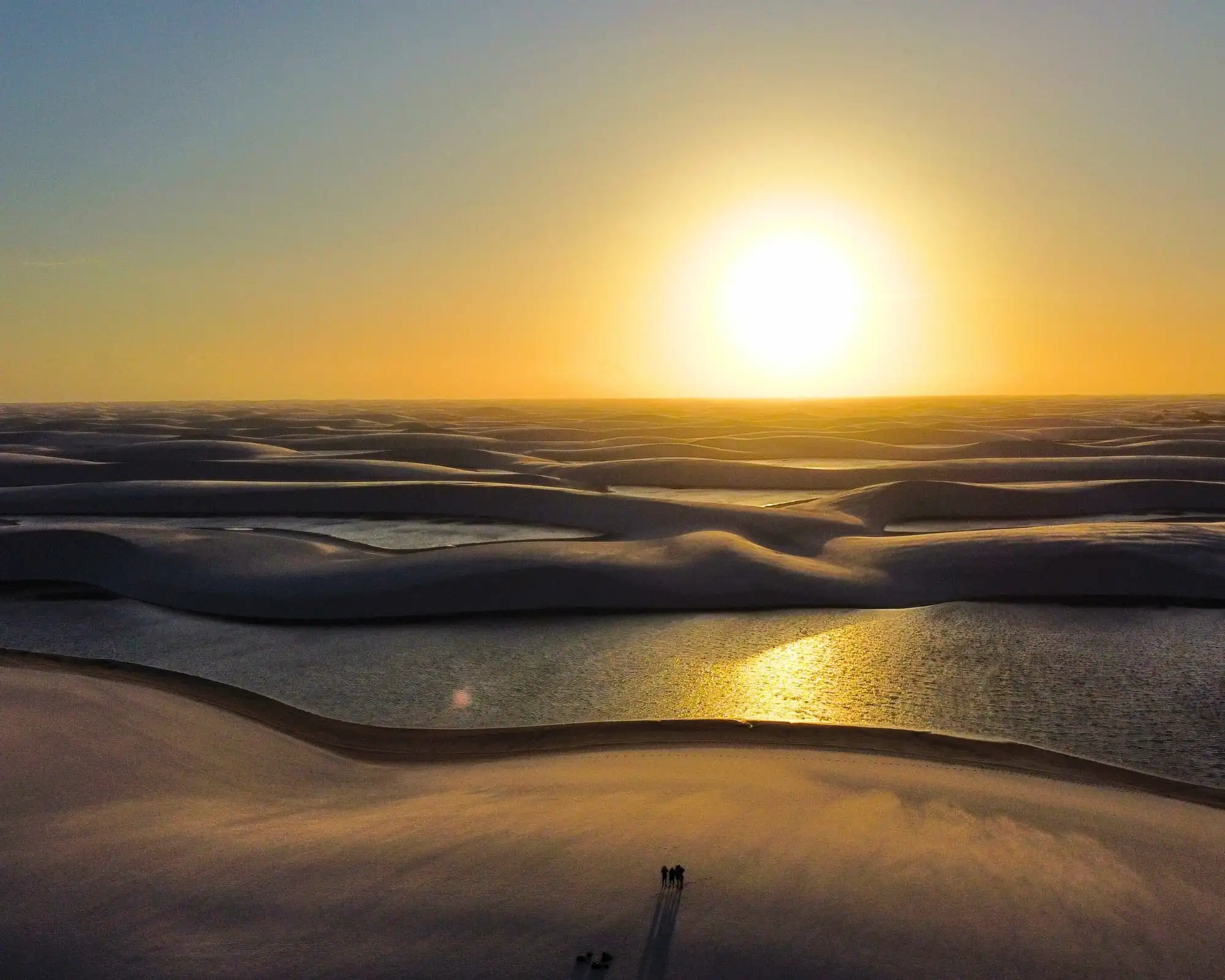National parks are important to protect nature, but they also offer amazing ecotourism experiences that can attend to travelers’ every adventure need
Essential for the preservation of natural ecosystems of great ecological relevance and scenic beauty, Brazil’s 75 natural parks are also important assets for scientific research, environmental education and non-exploitative ways to connect with nature – which directly affects ecotourism.
While Tijuca (Rio de Janeiro) and Iguazu (Paraná) parks are the country’s most visited – attracting 4.5 and 1.4 million visitors in 2023, respectively –, there are other incredible national parks in Brazil that offer terrific experiences for travelers who can’t get enough of outdoor activities.
If you’re a nature and adventure aficionado, then you should visit Brazilian national parks next year! We’ve created a list of remarkable off-the-beaten-path national parks you should visit in 2025. Check it out below!
Chapada Diamantina National Park (BA)
Chapada Diamantina National Park (total area: 152,000 ha), in the state of Bahia, is one of Brazil’s main destinations for adventure travel. With gorgeous waterfalls (Fumacinha, Buracão, Sossego, Mixila, etc.), natural wells, lookouts, canyons and diverse vegetation, it’s the perfect place for a full immersion in nature.
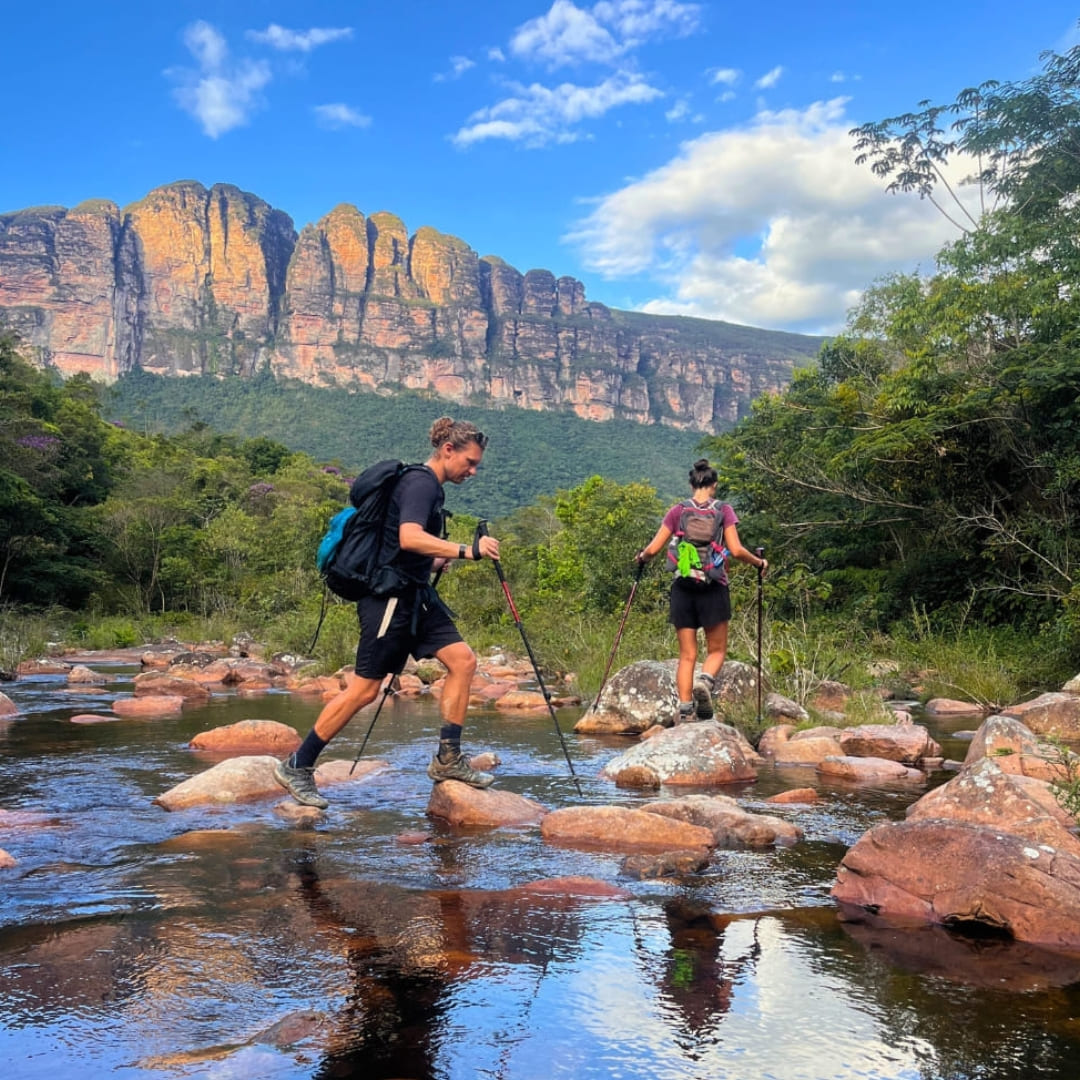
Vale do Pati is considered the best hike in Brazil by many hikers due to the amazing trekking routes that cross rivers, caves, mountains and rock formations.
Another unmissable experience is swimming in Poço Azul, an underground lake with crystal-clear waters that gain a beautiful blue tint when the sunlight cuts through the cave cracks.
Why visit?
Hike through Vale do Pati’s incomparable beauty, explore hidden caves, cool off in dozens of waterfalls, and live unforgettable moments in mesmerizing underground lakes.
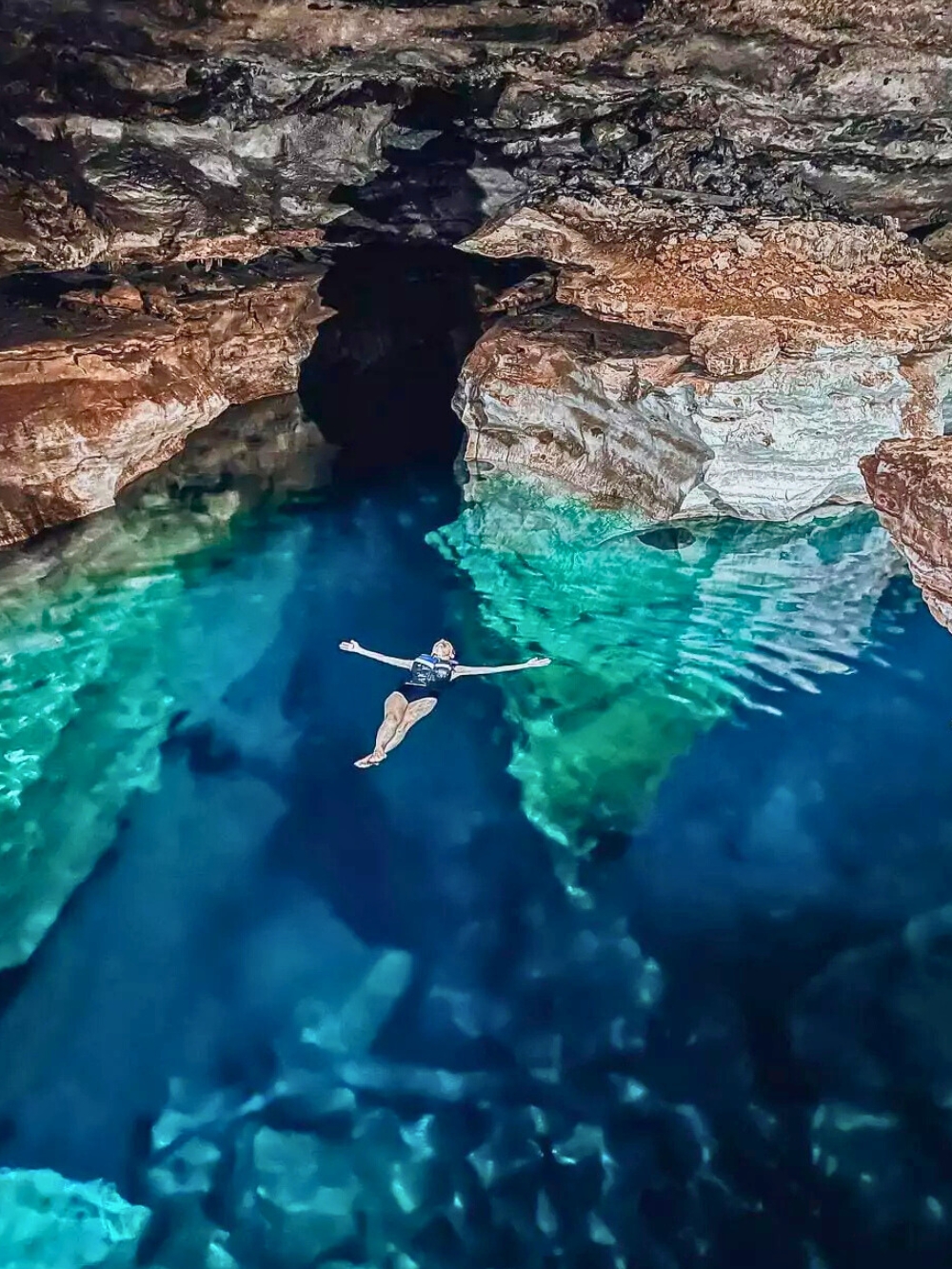
Photo:@flaviamouraleite
Lençóis Maranhenses National Park (MA)
Surely one of the most jaw-dropping national parks in Brazil, Lençóis Maranhenses (total area: 155,000 ha), in Maranhão state, stands out for the white sand dunes and rainwater lagoons sharing the same space. Rivers, mangroves, and beaches also inhabit this gorgeous desert-like scenario.
The park’s otherworldly beauty is recognized internationally. In July 2024, UNESCO (United Nations Educational, Scientific and Cultural Organization) nominated Lençóis Maranhenses as a natural world heritage site.
Ideal for photographers and explorers, it’s an unforgettable destination for travelers seeking something unique and breathtaking.
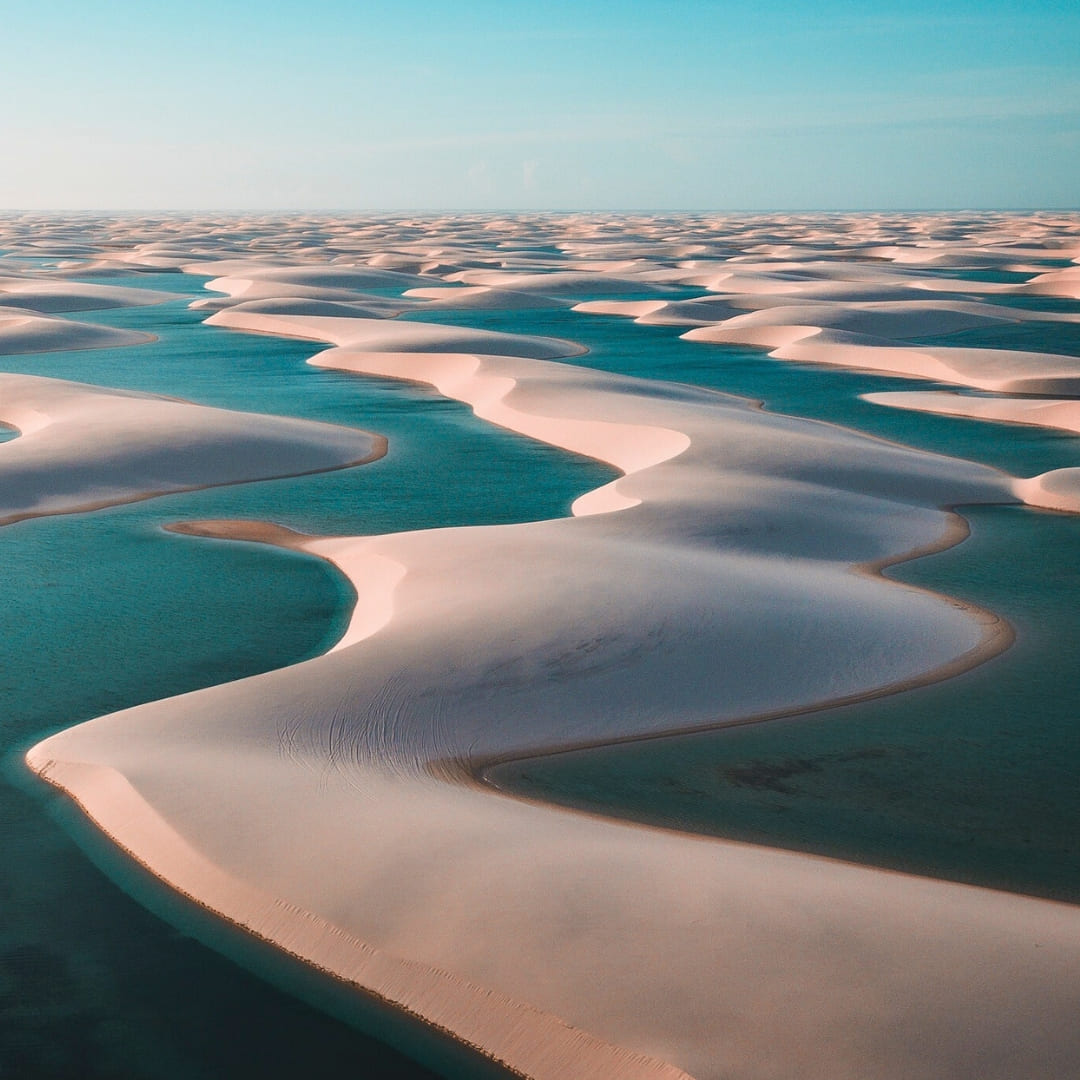
Photo: @willtaviajando
Why visit?
Lençóis Maranhenses is the largest sand dune field in South America, offering over 36 thousand lagoons that appear and disappear according to the rainfall volume.
It’s the perfect vacation option for travelers looking for peaceful experiences and splendid natural scenarios!
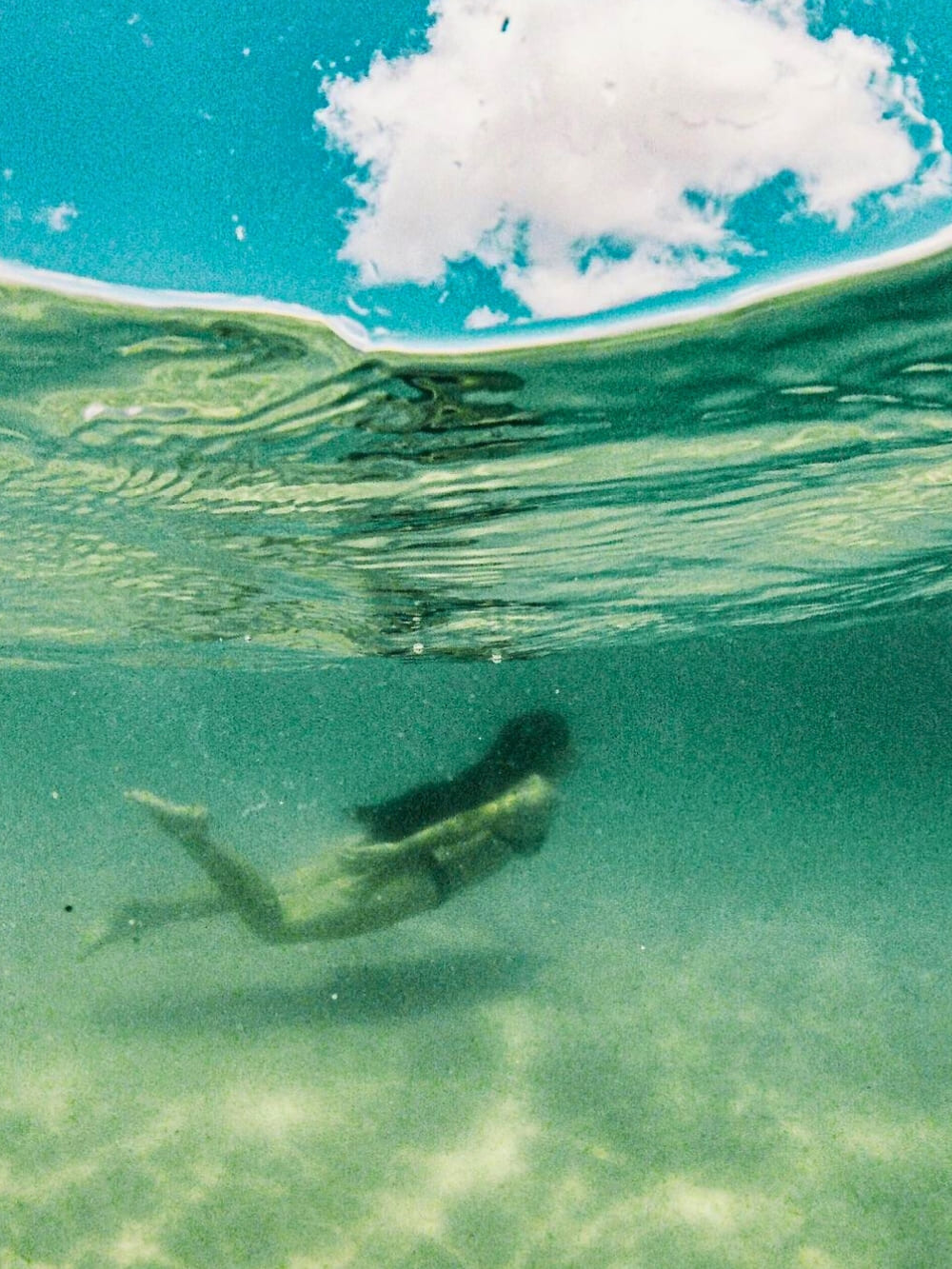
Photo: @marialbl_
Fernando de Noronha Marine National Park (PE)
Located off Brazil’s northeastern coast, Fernando de Noronha Marine National Park (total area: 11,000 ha) protects a cluster of twenty-one islands in the state of Pernambuco.
Although one of the most desired travel destinations in Brazil, Fernando de Noronha limits the number of travelers to ensure its conservation. According to federal and state laws, only eleven thousand people (locals, workers, and tourists) per month are allowed on the island.
That is one of the reasons why the park is so beautiful and well-preserved. With vibrant coral reefs and rich marine life, it’s an amazing place for scuba diving and spotting dolphins, turtles and various species of fish.
Noronha’s unspoiled beaches are a sight to behold. Baía do Sancho, in particular, is the main attraction and was even chosen as the best beach in the world by TripAdvisor’s users in 2023.
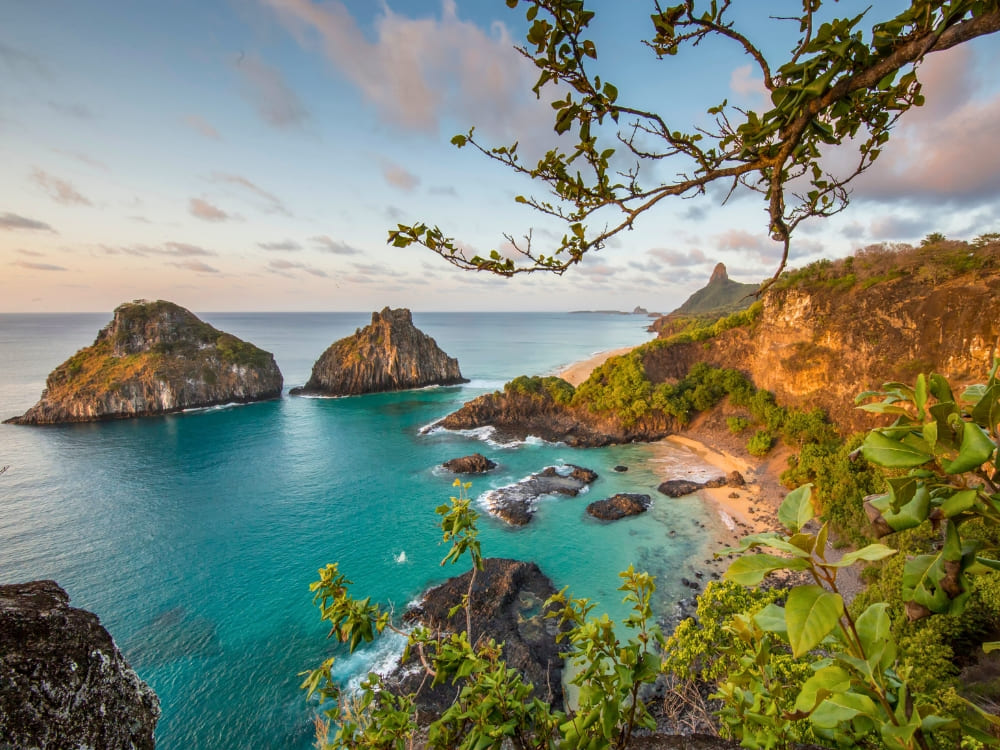
Why visit?
Fernando de Noronha’s pristine beaches are perfect for tanning, relaxing and engaging in aquatic activities, like swimming, snorkeling, surfing, canoeing and water bike riding.
In addition, The Tamar Project, an organization that protects various species of sea turtles, is based on the island and welcomes visitors all year round.
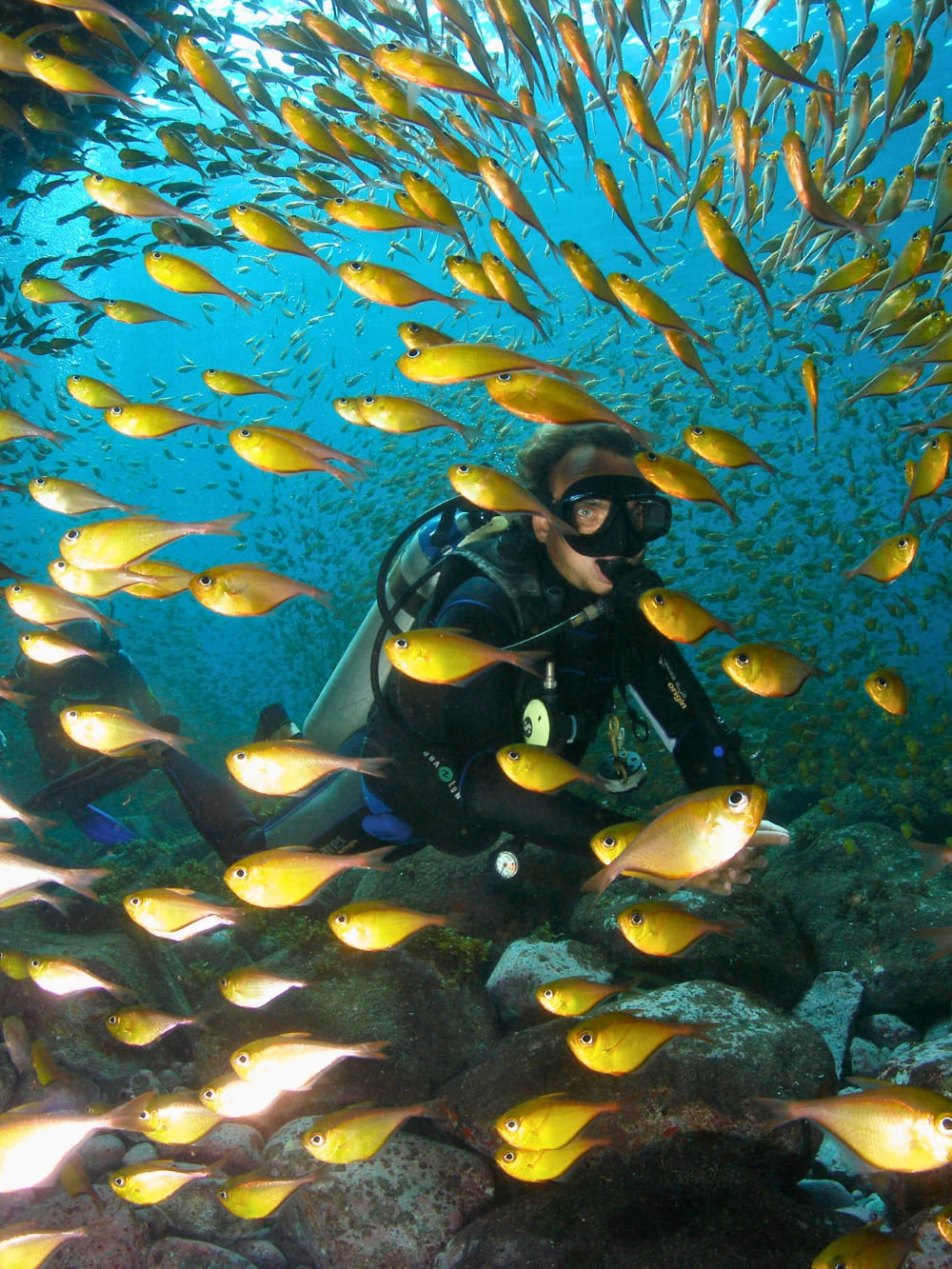
Photo: @atlantisdrivers
👉 Curious about Fernando de Noronha? Discover 10 interesting facts about this Brazilian island paradise.
Pantanal Matogrossense National Park (MT/MS)
As part of the largest tropical wetland on the planet, Pantanal Matogrossense National Park (135,000 ha) is divided between two states – Mato Grosso and Mato Grosso do Sul.
Home to three major Brazilian biomes (Cerrado, Atlantic Forest, and the Amazon Rainforest), the Pantanal’s flora and fauna play a huge role in balancing South America’s ecosystem.
This is the best national park in Brazil for travelers who love wildlife watching, with over 650 bird species, 80 mammal species, and 50 reptile species.
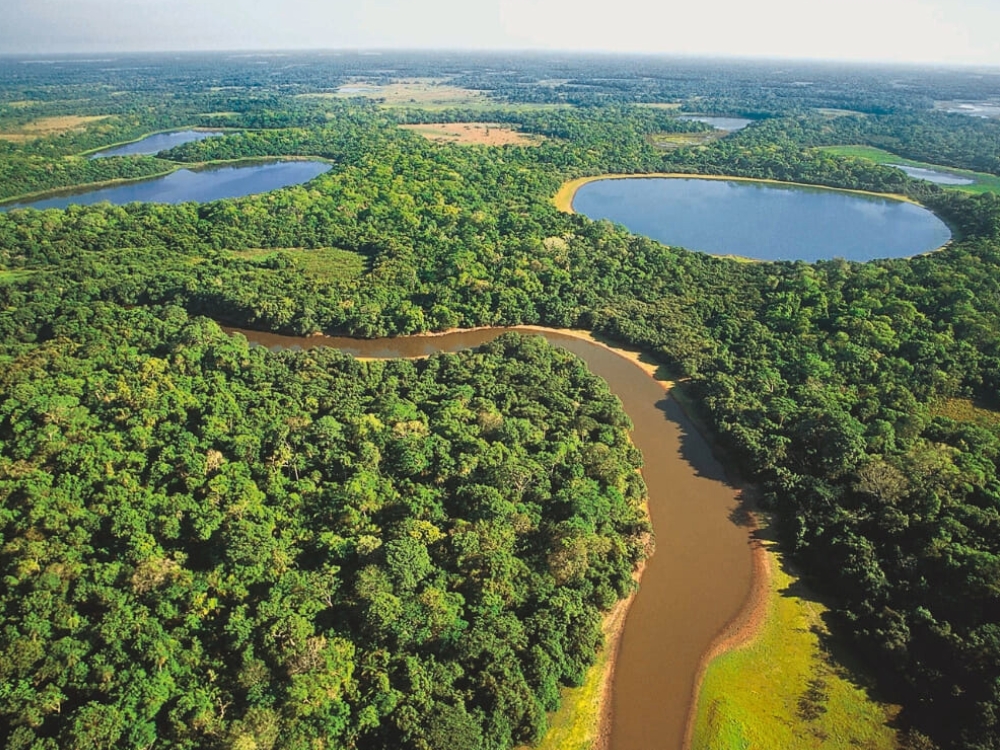
Why visit?
Incredible animals roam around the Pantanal, such as capybaras, caimans, jabiru storks, and majestic jaguars. Photo safari and night tours are perfect activities to observe the wildlife.

Photo: Henrique Olsen
Chapada dos Veadeiros National Park (GO)
Situated in the northeast of Goiás, Chapada dos Veadeiros National Park (total area: 240,000 ha) includes lush vegetation, hundreds of water springs, waterfalls, lookouts, dozens of hiking trails of different levels of difficulty, and ancient rock formations.
Scientists claim these rocks are over a billion years old, back when the Earth was formed by continental crusts spread across oceans – millions of years before Pangaea. Over time, natural phenomena crystallized the sand of the sea and the beaches, creating beautiful quartz crystals.
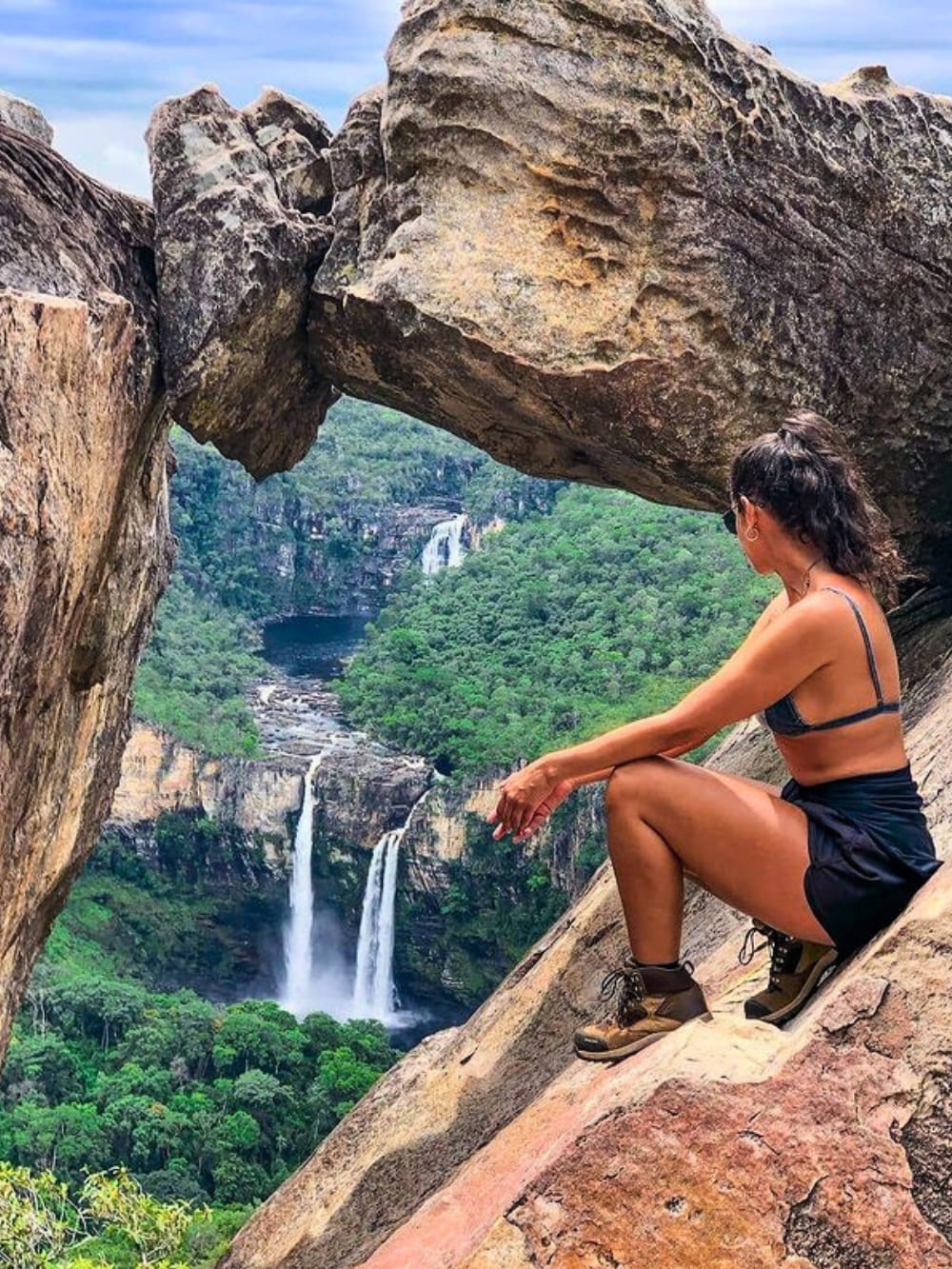
Photo: @camilarbs
Why visit?
Chapada dos Veadeiros’ enchanting atmosphere attracts trekkers and spiritual travelers who seek a closer connection with nature and the crystals’ presumed healing powers.
With over 2,000 cataloged waterfalls, it’s a wonderful destination for swimming, taking lots of pictures, or simply relaxing by the water.

Photo: @dougcerrado
Serra dos Órgãos National Park (RJ)
Serra dos Órgãos National Park (total area: 20,000 ha) guards the mountain region of Rio de Janeiro across four different towns: Petrópolis, Teresópolis, Magé and Guapimirim.
The park is great if you like wildlife watching – there are 462 species of birds, 105 mammals, 103 amphibians, and 83 reptiles –, but it’s even better for trekking.
Beautiful natural scenarios adorn 200 km of trails, including the trek to the almighty Finger of God, a mountain that reaches almost 1,700 meters above sea level. No wonder this is one of the best hikes in Brazil!
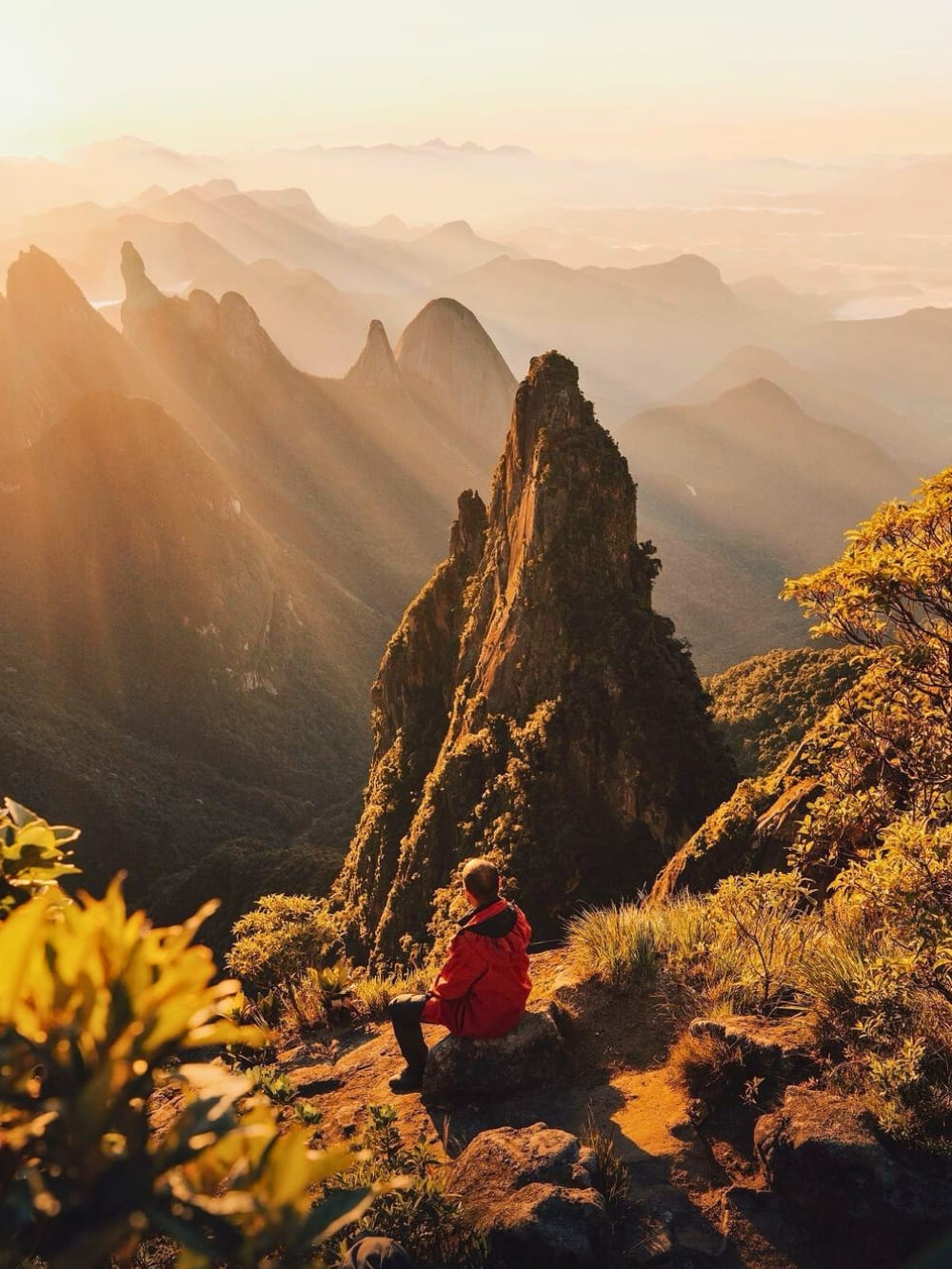
Photo: @_fabiozingg
Why visit?
Serra dos Órgãos is mostly recommended for people with good physicality that enjoy challenging hiking trails and mountain climbing. It’s a demanding experience, but the beauty of the park’s untouched nature is a big reward.
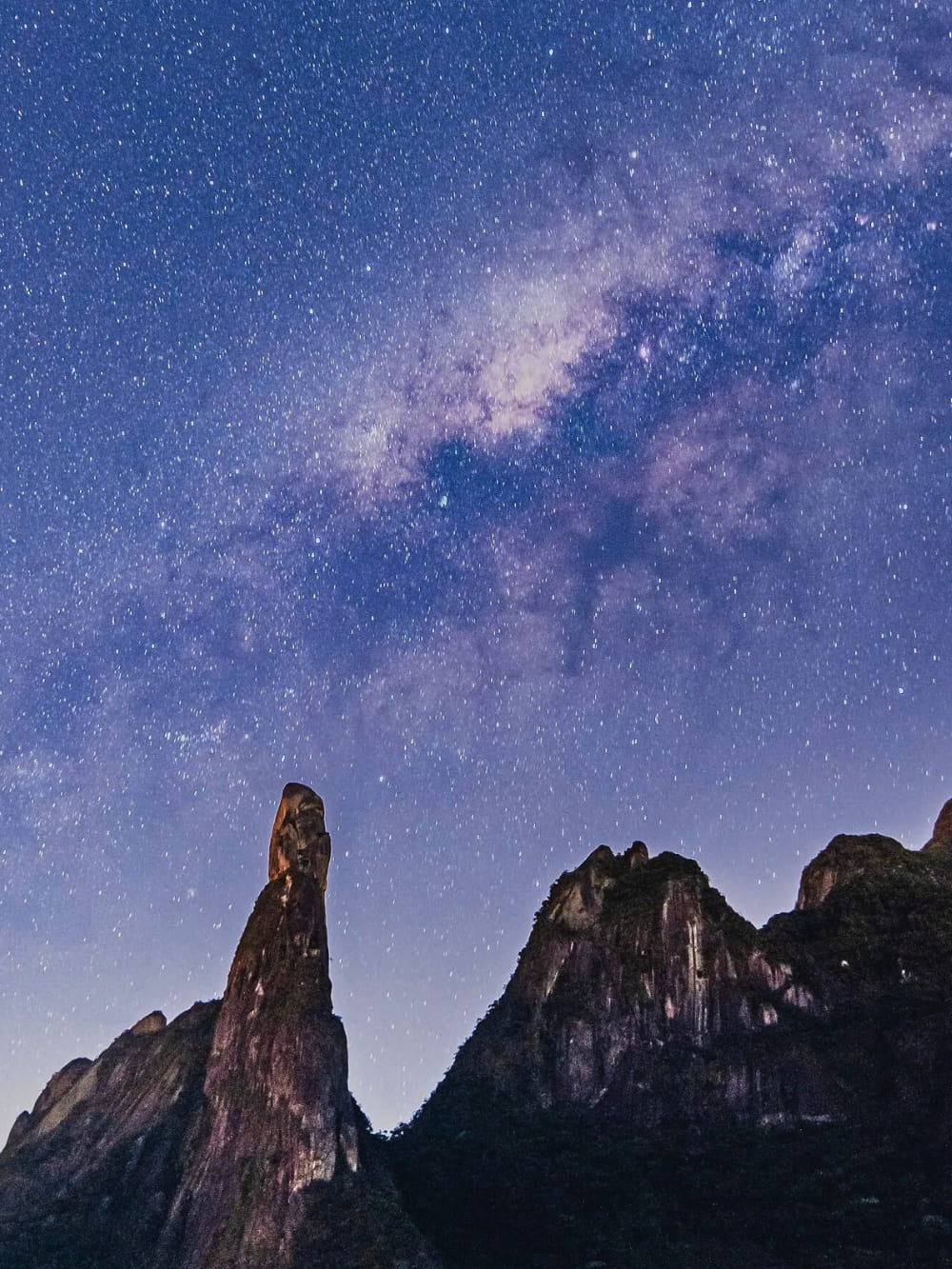
Photo: @humbertobaddini
Serra da Capivara National Park (PI)
Curious travelers who love history can’t miss the chance to travel to Serra da Capivara National Park (total area: 130,000 ha), in the state of Piauí. Considered a world heritage site by UNESCO since 1991, this mesmerizing place is a real treasure for science and ancient human civilization enthusiasts.
Amongst rocky cliffs and deep canyons, you’ll find 400 archeological sites – some of them are over 10,000 years old! – with fascinating cave paintings and engravings made by the first humans in South America.
Licensed guides are required to accompany the groups in Serra da Capivara. This ensures the park’s preservation, but it also allows for custom tours and engaging lessons about this amazing environment and its past.
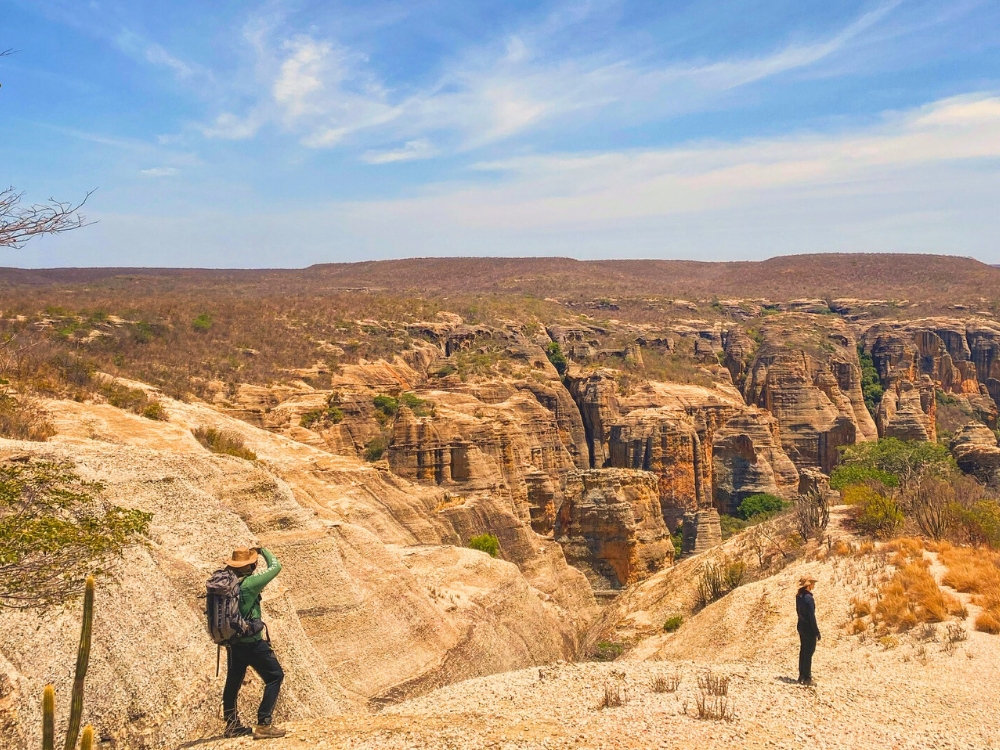
Photo: @educoelhoguia
Why visit?
Visiting Serra da Capivara is an incredible chance to get in touch with human history. Not only is the park the largest cave painting site in the world, it also displays gorgeous views of ancient canyons, dense vegetation, and infinite blue sky.
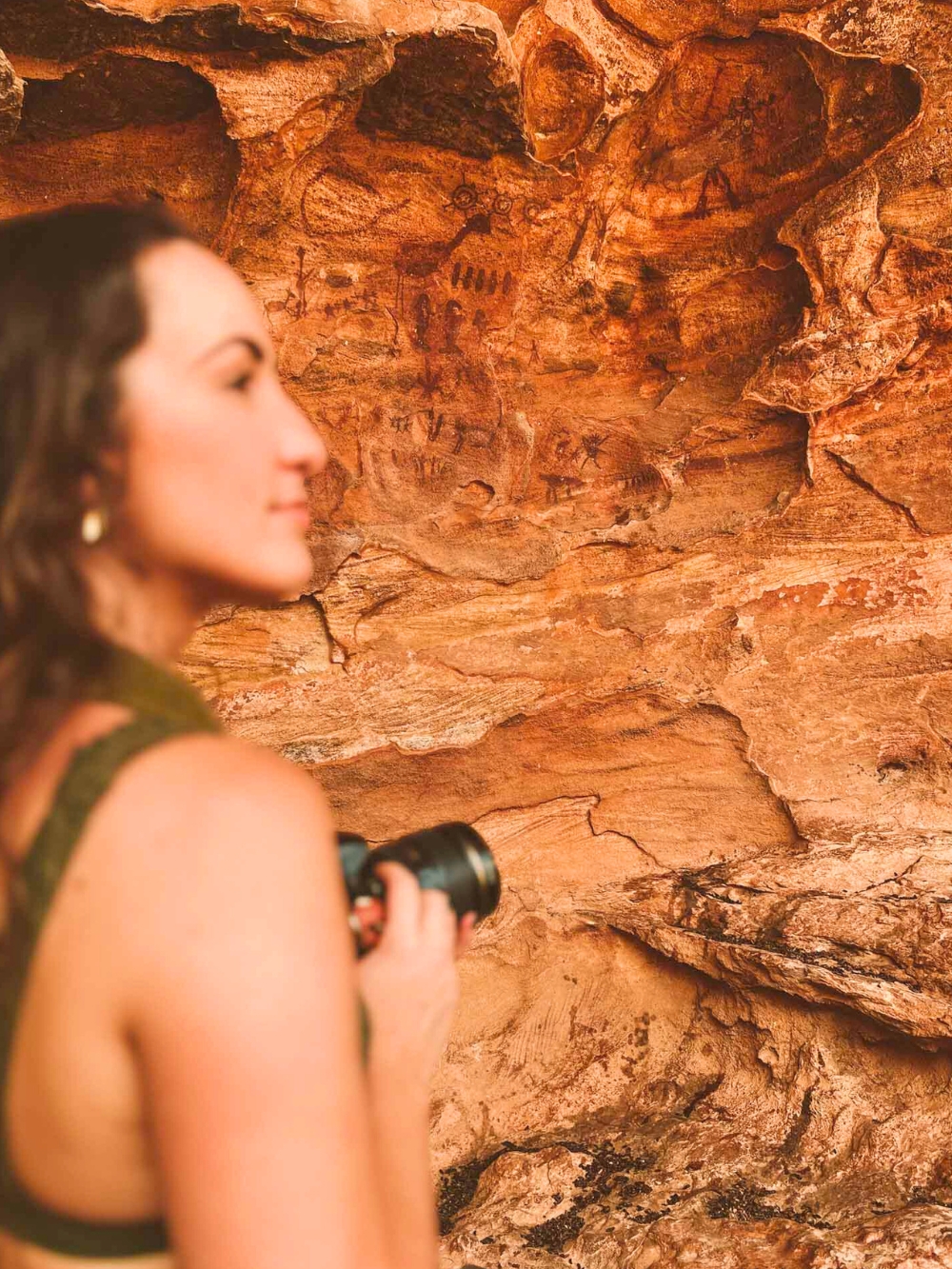
Photo: @gaiavani
Mount Roraima National Park (RR)
Reaching the top of Mount Roraima is unforgettable. On the triple border of Brazil, Venezuela and Guyana, Mount Roraima National Park (total area: 117,6000 ha), in Roraima, is excellent for hiking, wild camping and mountain climbing. The very top of the mountain reaches nearly 2,900 meters above sea level.
Mount Roraima is located mostly on Venezuelan territory, so it’s common for travelers to also roam around Canaima National Park (total area: 3,000,000 ha), in Bolívar. That’s where you’ll find the Valley of Crystals, an impressive natural quartz formation.
You can also swim in the rivers (Orinoco, Essequibo, Amazon) and natural pools, observe the rich fauna and flora, and trek in Mount Roraima.
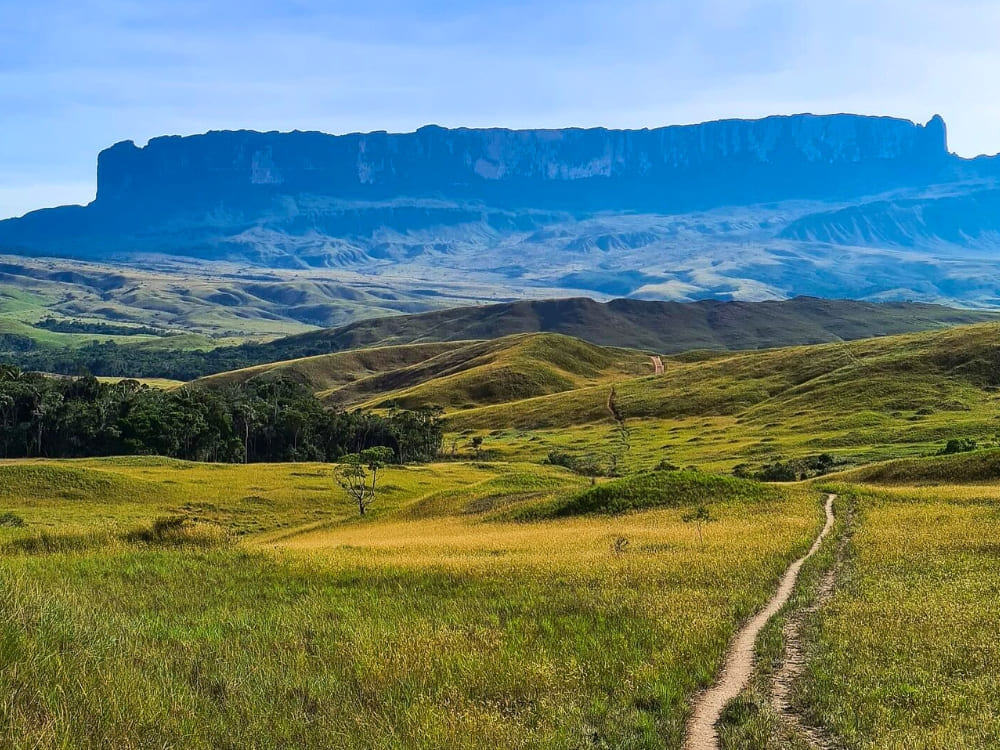
Photo: @dmitrideigatu
Why visit?
Mount Roraima is one of Earth’s oldest geological formations and dates back nearly two billion years, making it one of the most fascinating places in the Americas.
Shrouded in mystery, it captivates visitors with its towering cliffs and mesmerizing ecosystems, offering an awe-inspiring glimpse into Mother Nature’s wonders.
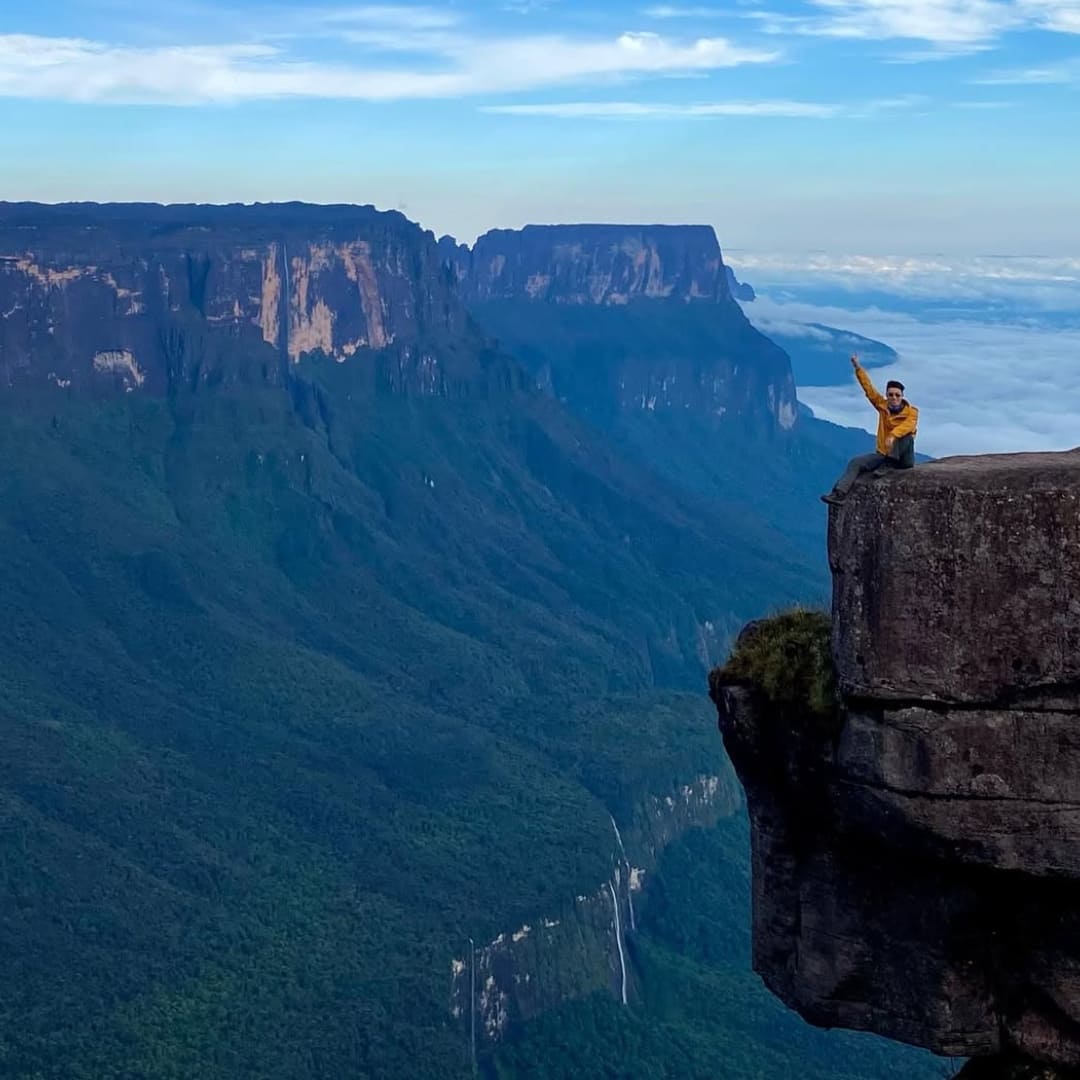
Photo: @jkterada
Jaú National Park (AM)
The largest national park in the state of Amazonas, Jaú (total area: 2,272,00 ha) protects a good portion of the Amazon and its watershed, both immeasurably valuable to the planet’s ecosystem, making it one of the most best places to visit in the rainforest in Brazil.
Travelers can hike in the jungle, spot wild animals, go on boat rides, fish for piranhas and other local species, and visit freshwater beaches. These activities are available on a fantastic river cruise tour that has Jaú as one of the highlights in its itinerary.
Weather conditions dictate itineraries in the Amazon. It’s important to pay attention to both the wet and dry seasons so you know when is the best time to visit.
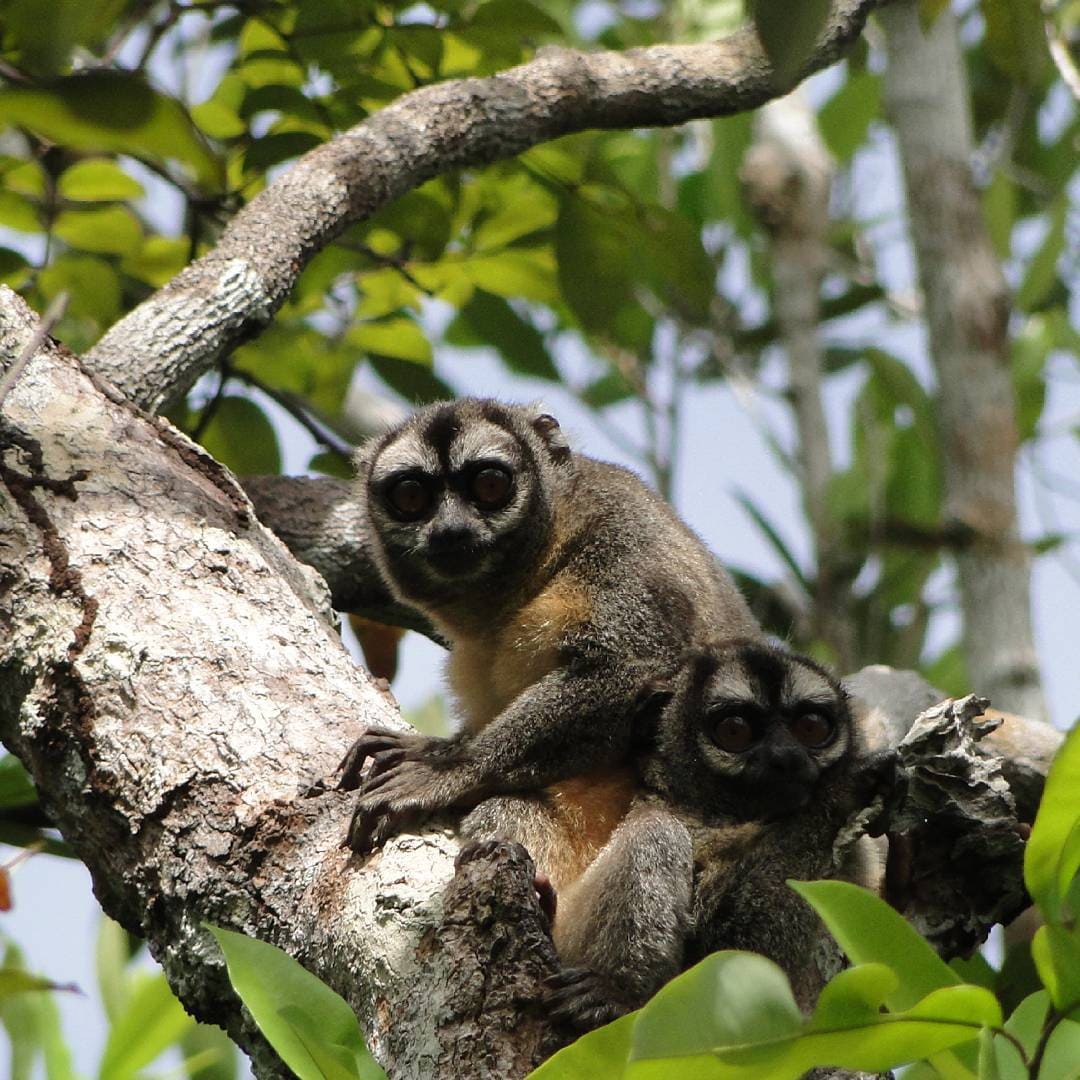
Photo: @parquenacionaldojau
Why visit?
Tourists dive deep into the heart of the Amazon when visiting Jaú, which holds exceptional experiences in nature that will surely be engraved in their minds and hearts for a very long time.
Beyond the natural wonders, archeological treasures are nestled in the park’s facilities. Petroglyphs from the Neolithic era located near Jaú River banks are major elements to understand humanity.
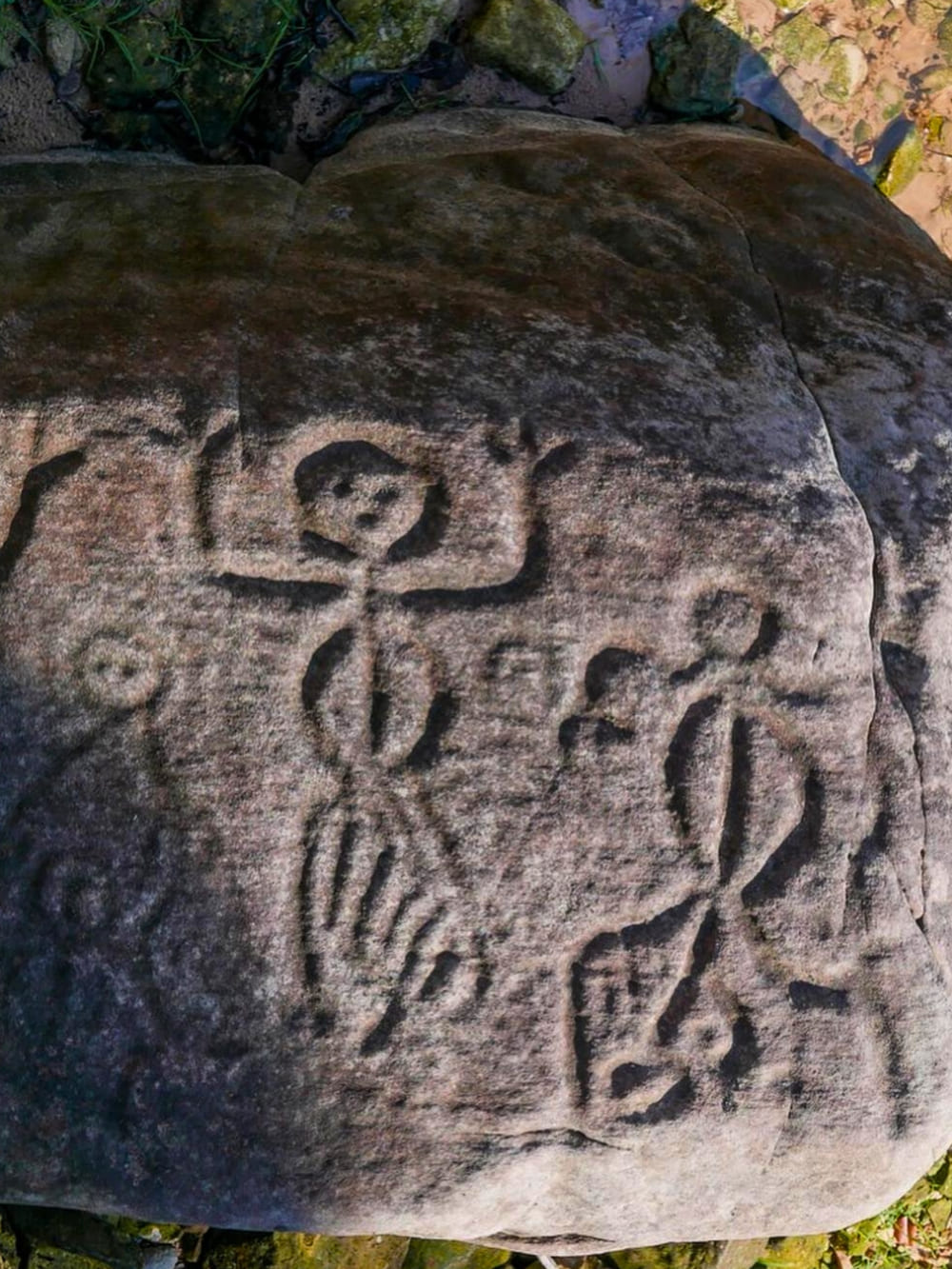
Photo: @parquenacionaldojau
Anavilhanas National Park (AM)
Anavilhanas (total area: 350,000 ha) is always included on lists of the best national parks in Brazil for protecting over 400 hundred islands in Rio Negro. It’s the second-largest river archipelago in the world, only after Mariuá, also in Amazonas.
Tourists have a blast when it comes to adventure. Wildlife watching, interacting with Amazon pink dolphins, forest trekking, aquatic trails, and visiting freshwater beaches are must-have experiences in Anavilhanas.
The park is also home to Anavilhanas Jungle Lodge, a luxury lodge that mixes comfort and sustainable activities around the forest. It’s definitely one of the best stay experiences in the Amazon!
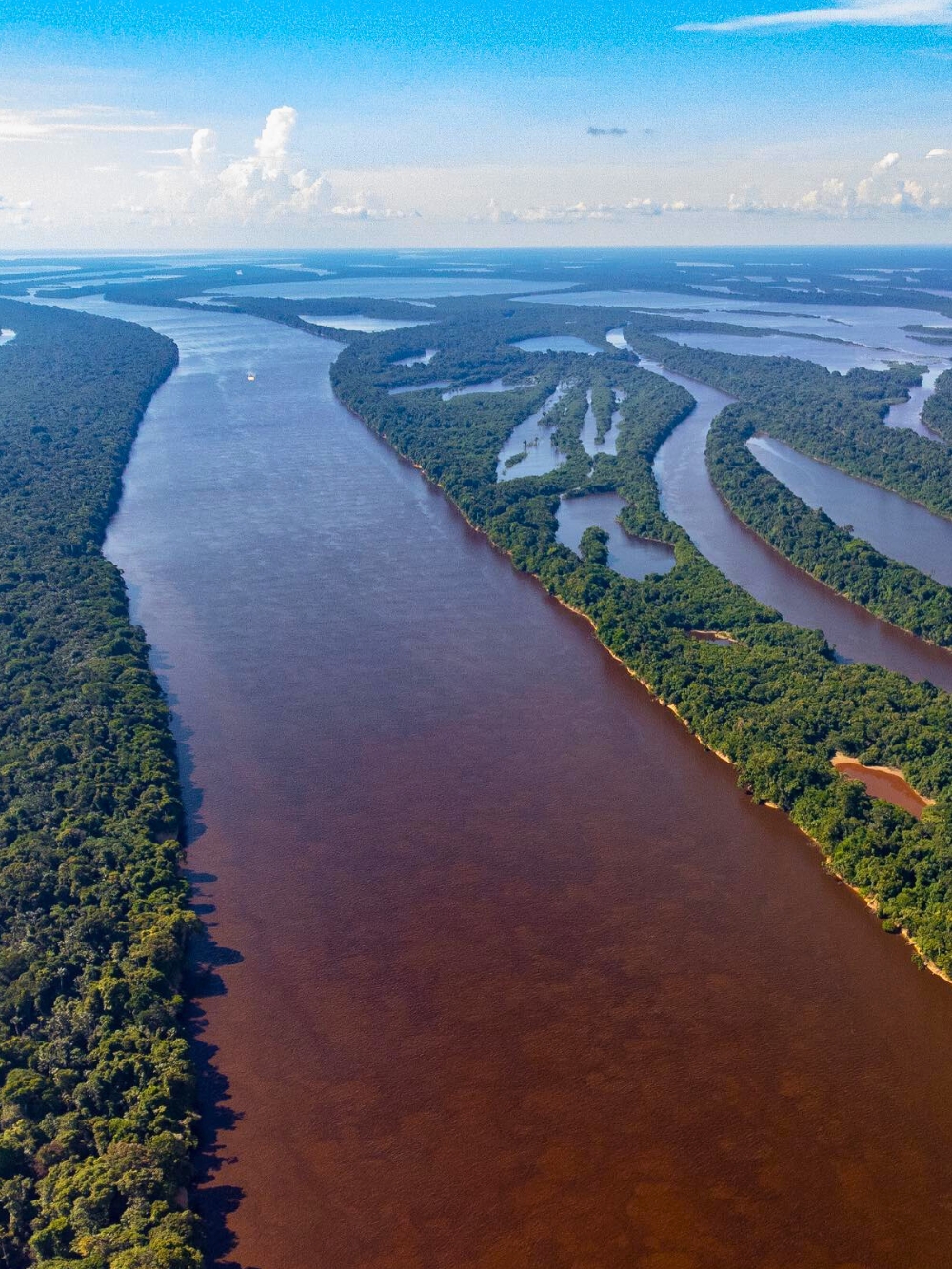
Photo: @dronello
Why visit?
The contrast of the white sand of the islands with the dark waters of Rio Negro creates beautiful views, capable of charming travelers of any age.
There are hundreds of river beaches, but some are completely unmissable: Orla, Aracari, Bararoá, Iluminado, Sobrado and Camaleão.
Rich biodiversity, immersion in the forest and engaging with local communities to learn about Amazonian culture are other reasons to visit Anavilhanas.
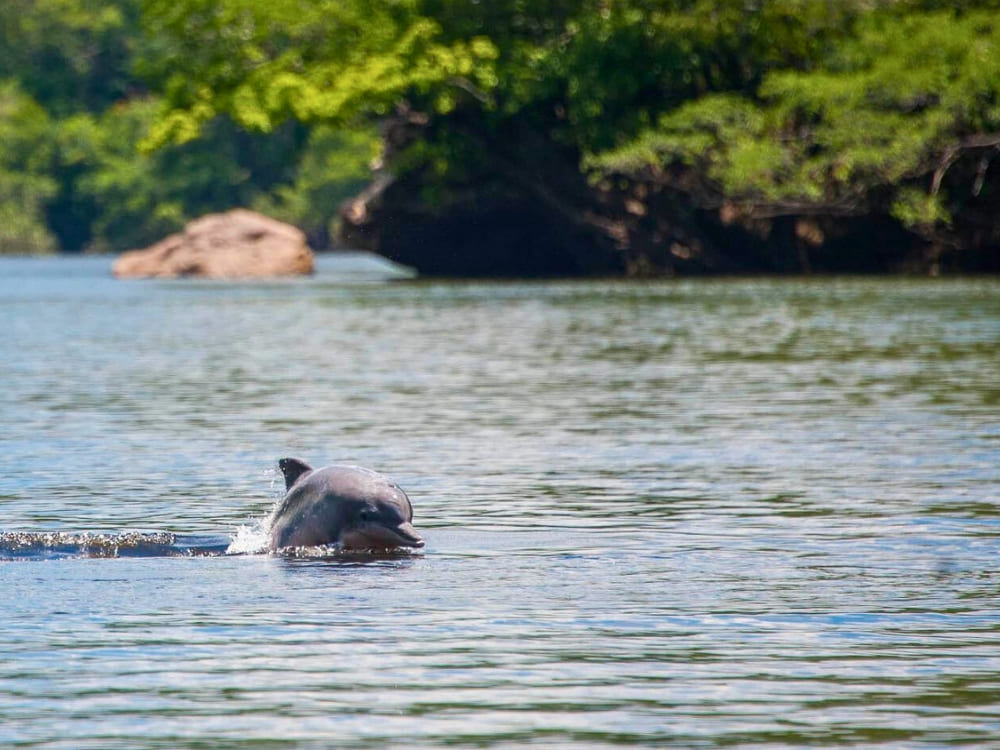
Abrolhos Marine National Park (BA)
Abrolhos Marine National Park (total area: 88.000 ha), a cluster of islands in Bahia, was established in 1983, but this is the same place English naturalist Charles Darwin fell in love with in 1832, during his 5-year voyage around the world to collect data about biological evolution.
The book The Beagle Record: Selections From the Original Pictorial Records and Written Accounts of the Voyage of the H.M.S. Beagle (1979), published by his great-grandson, Richard Keynes, mentions Darwin’s fascination towards Abrolhos’ green vegetation, abundant bird species and coral reefs.
The park is essential to preserve the richest marine biodiversity of the South Atlantic, home to sea turtles, seabirds, Mussismilia braziliensis corals and humpback whales.
Many travelers choose this heavenly archipelago for the Abrolhos Liveaboard, which includes hiking, birdwatching, stand up paddling, snorkeling and scuba diving. It’s a wonderful destination for divers and marine life admirers.
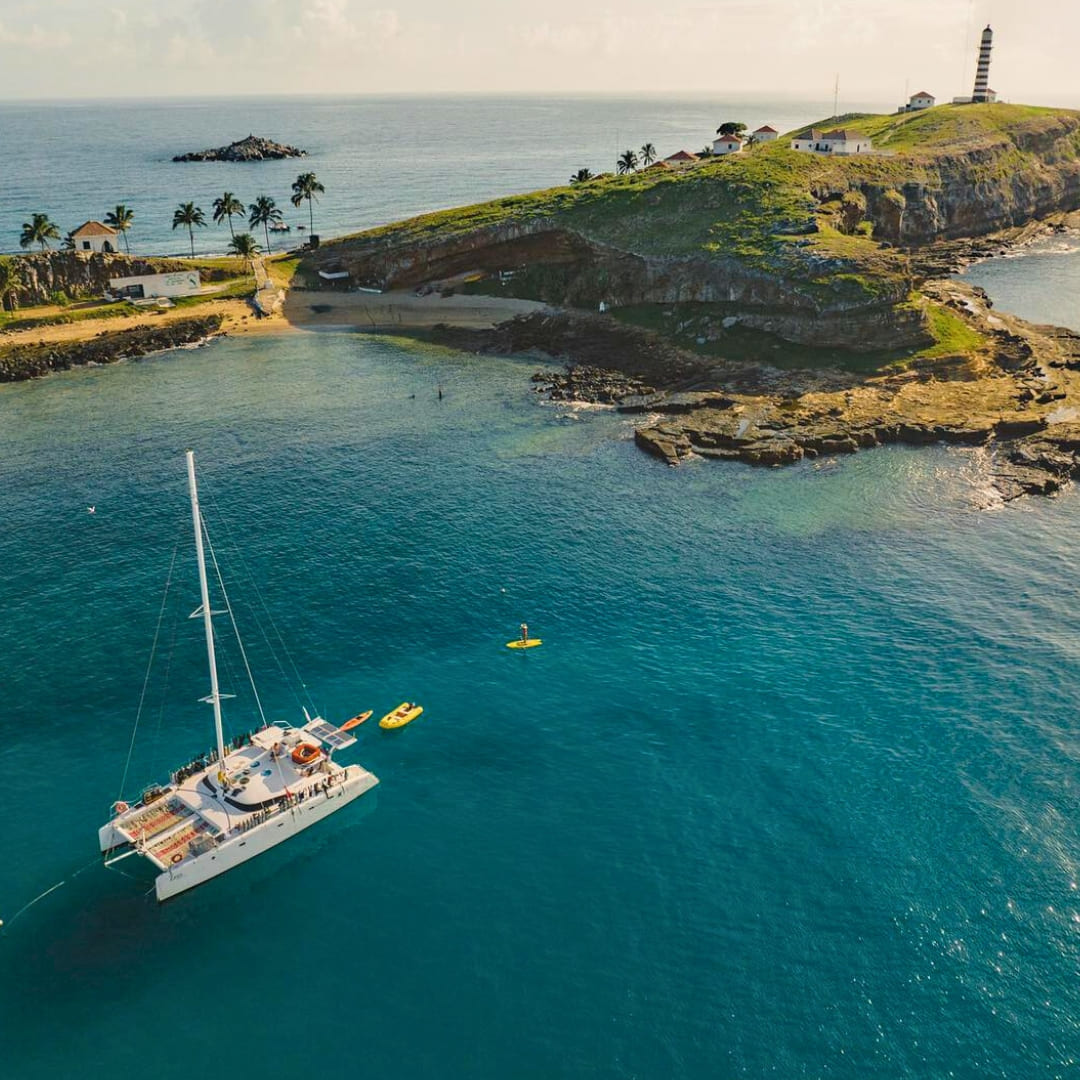
Photo: @raizesdomundo
Why visit?
Abrolhos’ beautiful mix of colors – green for the trees, blue for the sea, white for the sand and every color under the rainbow for the coral reefs – can make anyone breathless and dreading the moment of leaving this paradise.
Wildlife enthusiasts are in for a treat while spotting humpback whales. From July to November, Abrolhos becomes a prime location for whale watching, as these magnificent creatures migrate to the area to breed and nurse their young.
👉 Read our 10 Facts About Abrolhos and discover more about this marine paradise
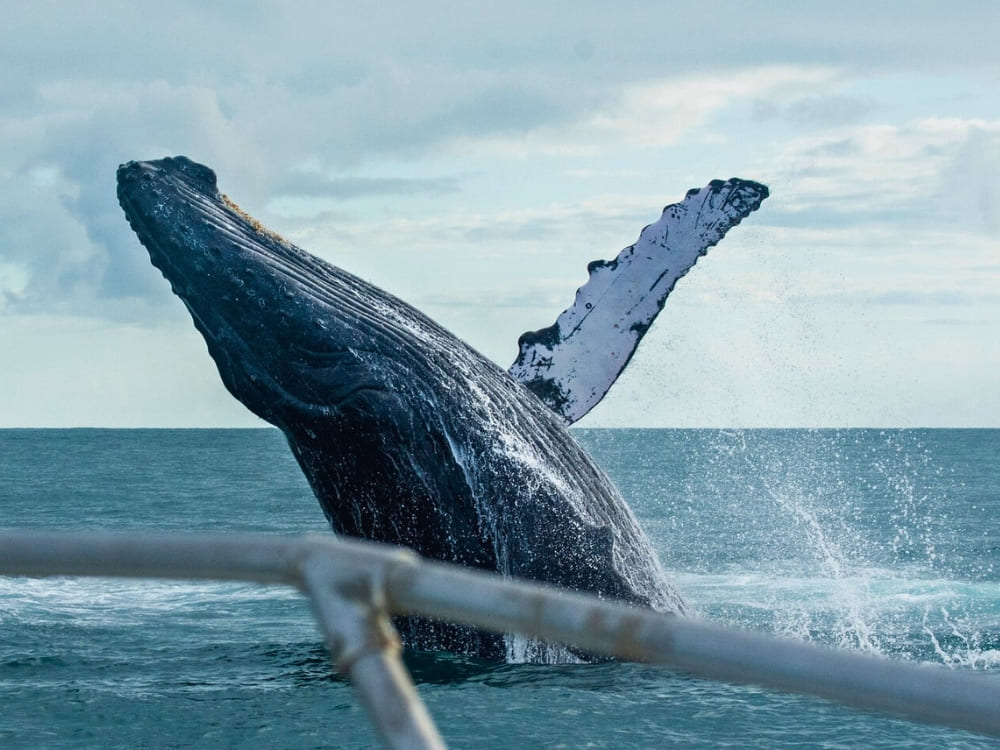
Photo: @projetobaleiajubarte
Ready to visit amazing national parks in Brazil? Plan your 2025 vacation with us!
Now all you have to do is choose your favorite Brazilian national park – or more than one! – to start planning your 2025 vacation plans.
Whether you’re drawn to forest treks, gorgeous beaches and waterfalls or mountain climbing, PlanetaEXO is here to help you with your dream adventure. Send us a message and let’s start planning!

